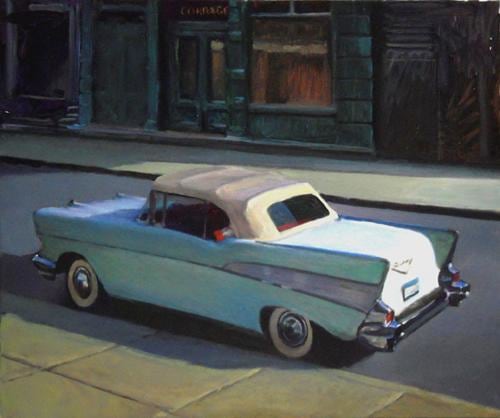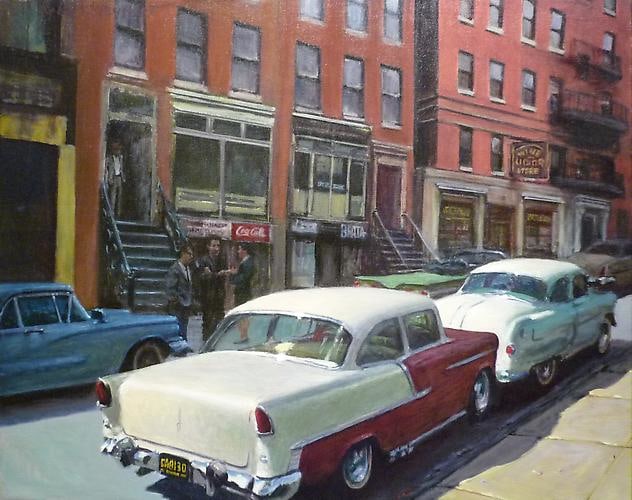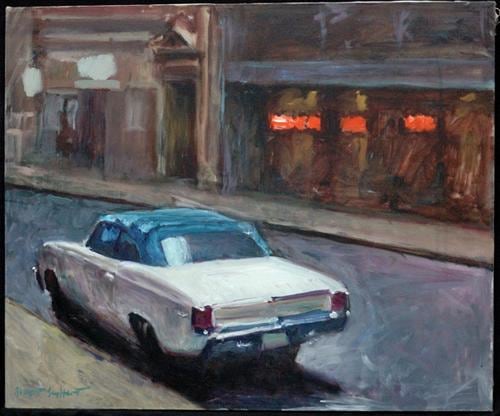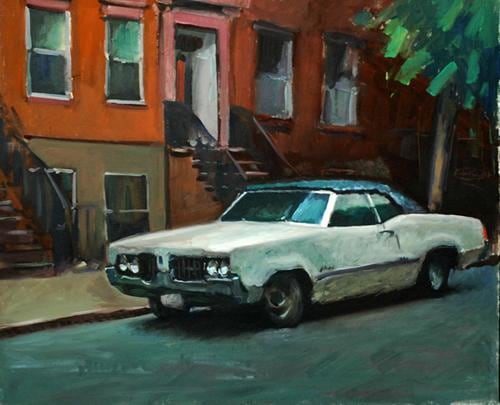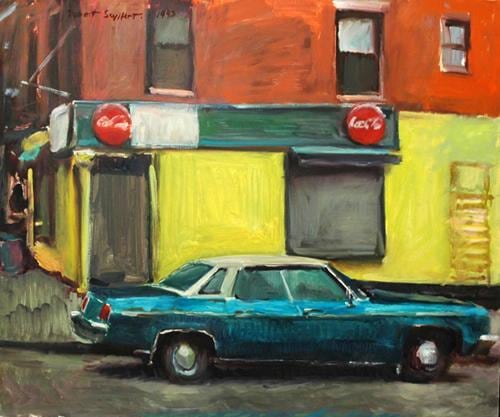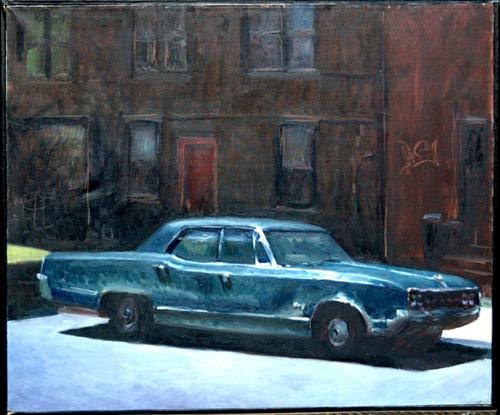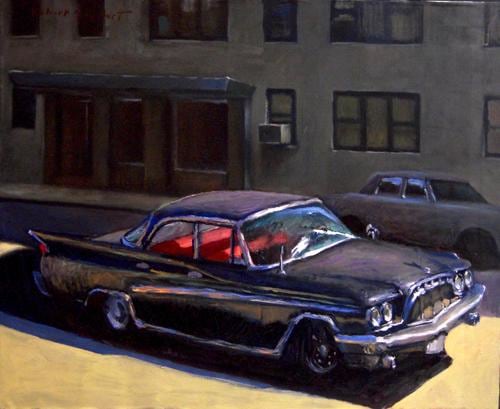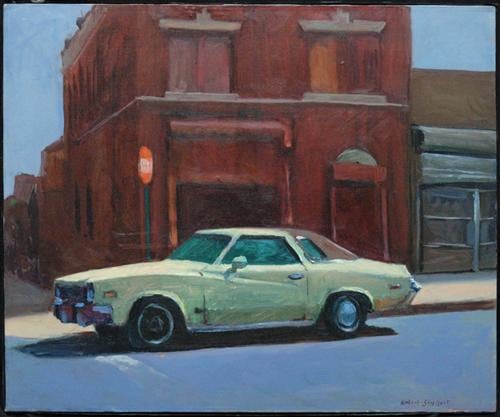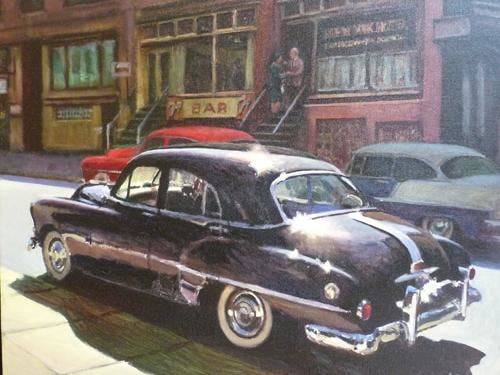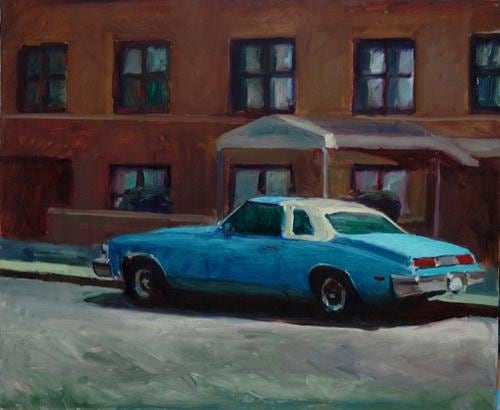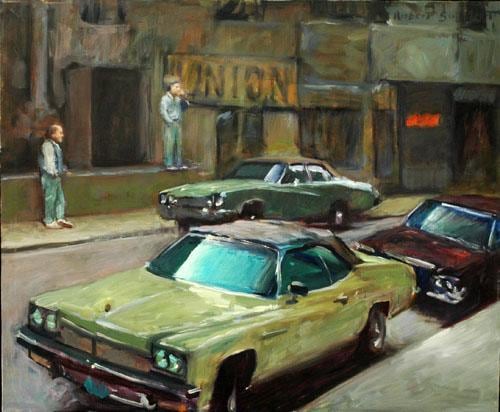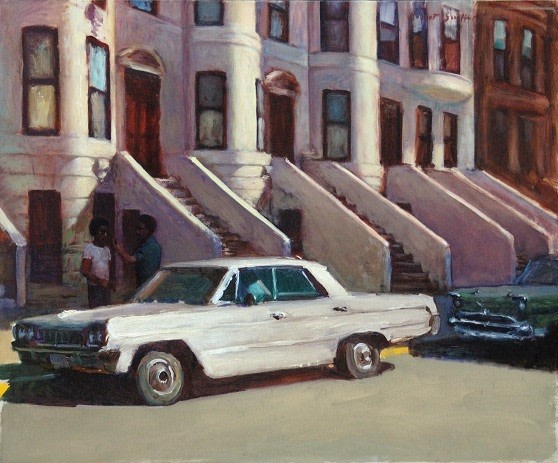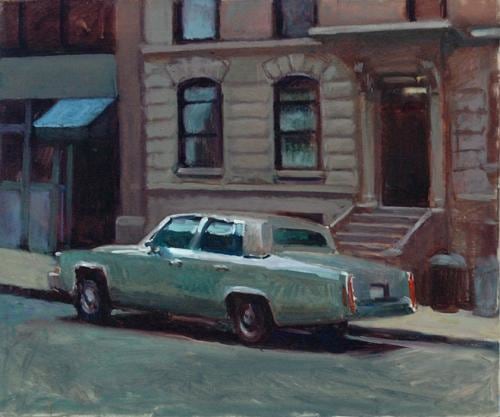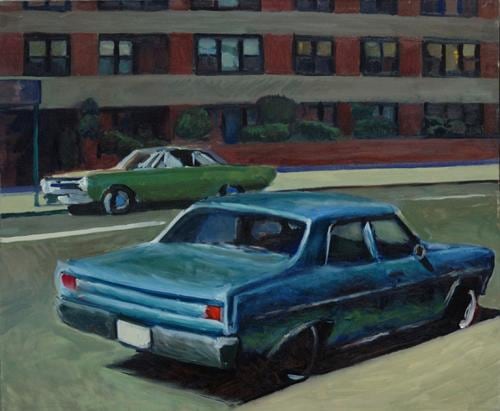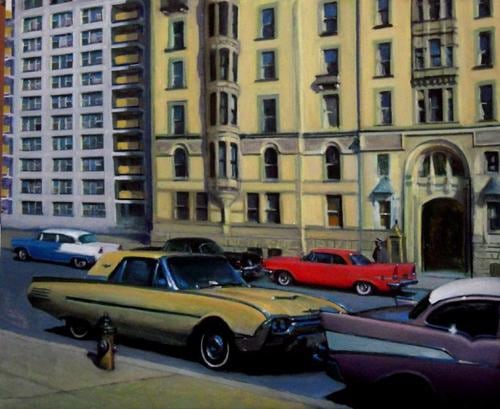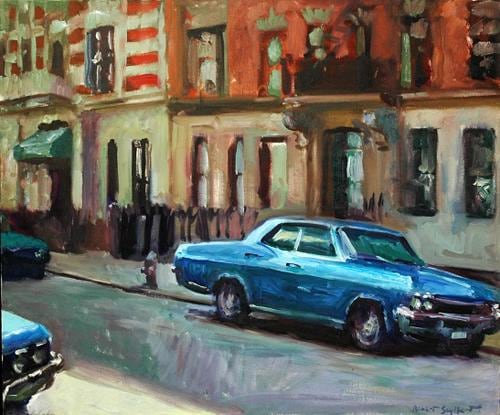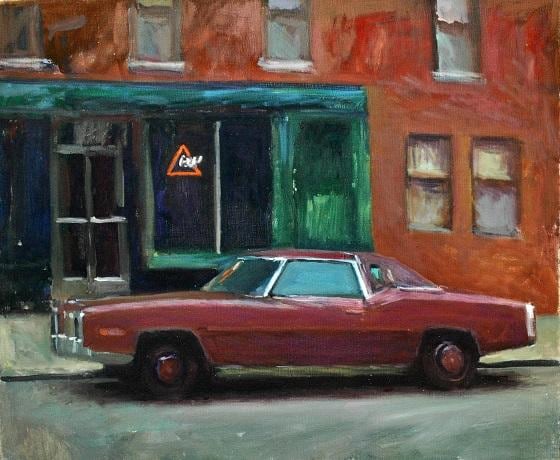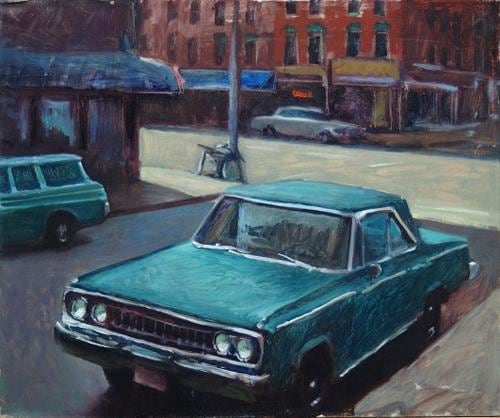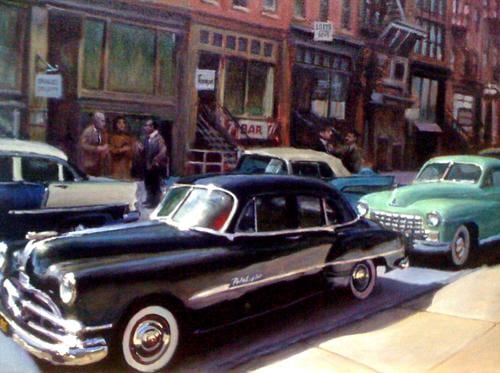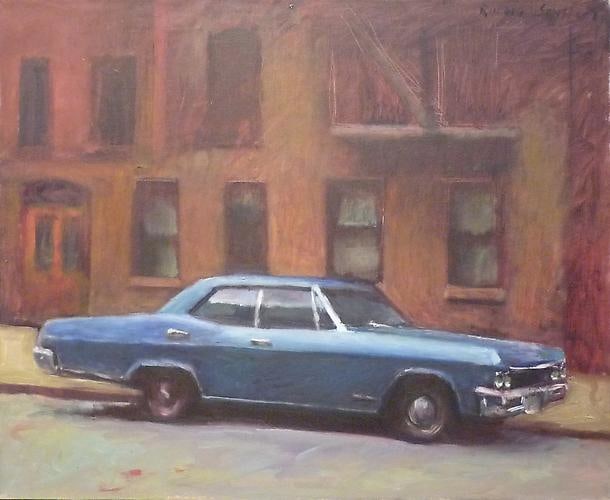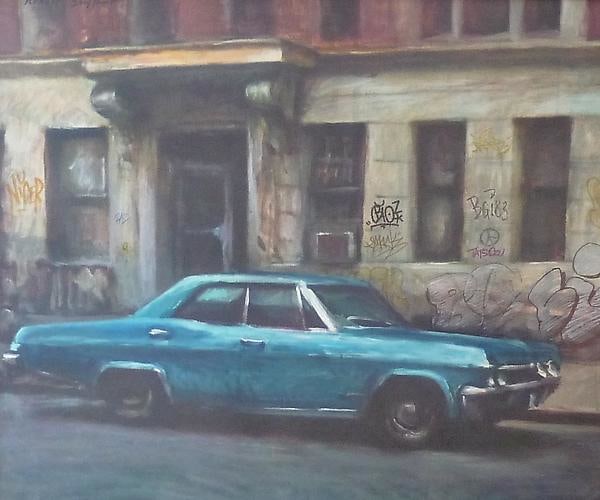FOR IMMEDIATE RELEASE
MEDIA CONTACT:
Kathleen White, Chip Holman
press@wholmangallery.com
NEW YORK, May 30, 2013 - William Holman Gallery is honored to present a solo pop-up exhibition of work by Robert Seyffert at the gallery from June 5 to June 16, 2013.
The exhibition places Seyffert’s most recent New York cityscapes and automobile paintings in dialogue with his earlier works from the 1990s and his first explorations of these subjects in late 1980s while he was teaching in Baltimore. Seyffert’s works in this exhibition depict mid-to-late 20th century cars within both real and imagined urban landscapes. Vehicles that defined the changing desires of the American dream, from a 57 Chevy to a Pontiac Delta 88, are painted with the intention of inciting memory and nostalgia. Yet, the detached and almost voyeuristic aesthetic of each of Seyffert’s scenes renders the works even more compelling. The virtuosic use of oil paint excites the viewer’s sense of beauty; “Whether it’s a big tree or a 1965 Pontiac,” Seyffert said, “there’s something about the light hitting the subject that excites me, and that’s what I paint. . . I’m trying to get the sensation created by the thing I’m looking at, and not just copying it” (Howell, 2003).
As these classic cars vanish from the urban landscape and are relegated to the domain of car shows, Seyffert’s Urban Automobiles are reminders of an age of American industrial prowess set within a gritty urbanity that has increasingly given way to gentrification. A keen sense of observation enhances each work as the viewer delights in the details of chrome and glass, while also identifying the characters painted within; the scenes sometimes include portraits of art historical figures peripherally located to the cars. Figures such as Tanager Gallery regulars Sam Goodman and Willem de Kooning stand as observers within Seyffert’s vignettes.
In his latest works, Seyffert has also collaborated with New York City graffiti artists, including the seminal graffiti artists Tats Cru, on three tagged giclee prints of his paintings. Additionally, Seyffert has conceived of frames that are painted by David Yearwood aka "Mdot Beatz" of the South Bronx, New York, May 2013. David is member of the artistic community very involved with the "Point" - a creative afterschool program, based in the Bronx, NY.
Robert Seyffert lives and works in the Bronx, NY. His interest in the relationship of nostalgia and the urban landscape correlates to the ever-changing status of graffiti art, moving from the streets to the gallery world.

